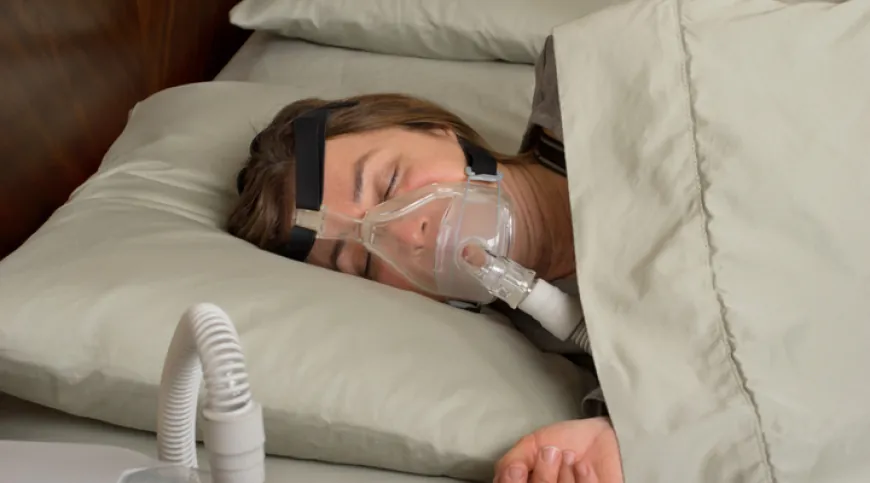Sleep Apnea Implants: A Breakthrough Treatment Option
One of the leading implantable treatments for moderate to severe OSA is called hypoglossal nerve stimulation therapy (HGNS).

Sleep apnea is a potentially serious sleep disorder in which breathing repeatedly stops and starts during sleep. There are primarily two types of sleep apnea - obstructive sleep apnea (OSA) and central sleep apnea. OSA is the most common type and occurs when throat muscles and tongue relax during sleep and block the airway. Central sleep apnea involves the brain not sending the correct signal to breathing muscles. Both types can cause fragmented sleep and reduce oxygen levels in the blood.
Types of Implants Used to Treat Sleep Apnea
Hypoglossal Nerve Stimulation Therapy
One of the leading implantable treatments for moderate to severe OSA is called hypoglossal nerve stimulation therapy (HGNS). This therapy involves implantation of a small device similar to a pacemaker near the chest cavity. The device is connected to electrodes wrapped around the hypoglossal nerve in the neck - a nerve that controls tongue movements during sleep.
When sleep apnea events are detected, such as pauses in breathing or reductions in blood oxygen levels, the device delivers mild pulses to the hypoglossal nerve. This causes the genioglossus tongue muscle to contract and protrude the tongue forward and upward in the airway, helping keep it open for breathing. The stimulation is gentle and subtle enough that patients typically do not feel it.
Palatal Implants
Another implant option aims to keep the airway open at the back of the throat where the soft palate is located. Palatal implants involve placement of small inserts made of plastic or titanium in the soft palate to stiffen and elevate it. This retraction of the palate helps prevent collapse into the airway during sleep.
Implantation is done as an outpatient procedure using an endoscope inserted through the mouth. An incision is made in the soft palate and inserts are placed through small holes. Once in place, the inserts put gentle, constant outward pressure to hold the palate in a more open position for airflow. The implants are designed to be permanent but can be removed if needed.
Tongue Suspension Systems
For those with mild sleep apnea, tongue suspension systems may help. These involve implanting small screws into the lower jaw bone just below the tongue. Thin flexible threads are then threaded through the tongue and attached to the screw heads, using a similar concept as surgical sutures.
The idea is to passively lift and secure the tongue in a forward position during sleep to increase airway space. The procedure takes about an hour and is done under general anesthesia on an outpatient basis. Advocates say it offers a less invasive option than other implants or CPAP therapy. However, long-term outcomes data is still emerging.
How Implants Treat Sleep Apnea
Regardless of the implant type, the goal is to target the areas of airway collapse during sleep that lead to apnea events. By stiffening tissue like the soft palate or pulling the tongue forward, the implants aim to mechanically hold the airway open to prevent blockages. This keeps air flowing into the lungs even as throat muscles naturally relax during sleep cycles.
The implanted devices and inserts work passively without any conscious effort needed by the patient. As long as they remain in place long-term providing their structural support in the airway, apnea events should be significantly reduced or eliminated. This allows for a full, restorative sleep without interruptions for breathing.
Benefits and Risks of Sleep Apnea Implants
Potential benefits of Sleep Apnea Implants compared to other treatment options include:
- Ease of use: No nightly equipment or effort needed unlike CPAP therapy.
- Permanence: Acts as a long-term solution once implanted rather than nightly respite device.
- Effectiveness: Clinical studies show significant reductions in apnea events and improved oxygen levels and sleep quality.
However, implants also carry risks like any surgical procedure, including:
- Infections, pain, swelling at incision sites initially that may require follow up treatment.
- Device malfunctions or migration requiring replacement surgery in some cases.
- Side effects from nerve stimulation like jaw pain, unusual sensations that may dissipate over time.
Careful patient selection is important to optimize benefits and risks for each individual case. Follow up with doctors long-term is also still advised to monitor device functioning and health impacts over years of use.
Implantable devices represent an evolving breakthrough treatment option for OSA in properly selected patients. By targeting areas of airway collapse mechanically through different approaches, they aim to keep breathing uninterrupted during sleep long-term. Clinical trials continue to research effectiveness long-term versus other OSA therapies like CPAP. As technology improves, sleep apnea implants provide new hope for those seeking a permanent solution and better quality sleep without nightly equipment dependence.
Get more insights on Sleep Apnea Implants
Explore more Articles related Medical Scheduling Software Market
For Deeper Insights, Find the Report in the Language that You want
About Author:
Ravina Pandya, Content Writer, has a strong foothold in the market research industry. She specializes in writing well-researched articles from different industries, including food and beverages, information and technology, healthcare, chemical and materials, etc.












